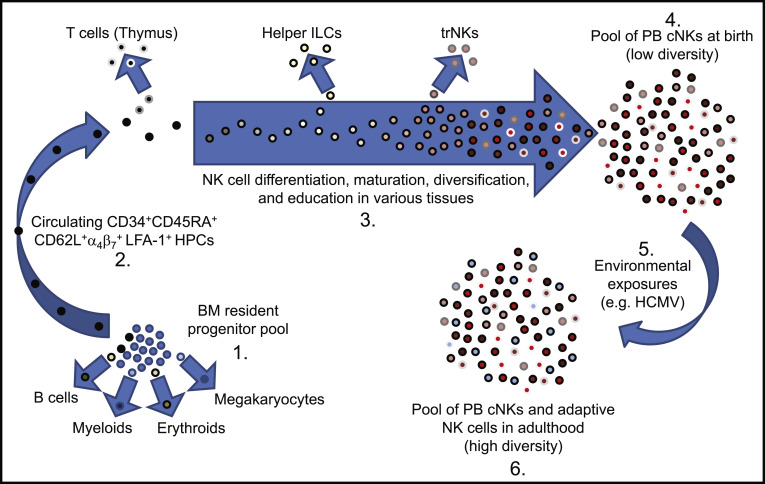Immunity ( IF 32.4 ) Pub Date : 2017-11-21 , DOI: 10.1016/j.immuni.2017.10.008 Aharon G. Freud , Bethany L. Mundy-Bosse , Jianhua Yu , Michael A. Caligiuri

|
Natural killer (NK) cells provide protection against infectious pathogens and cancer. For decades it has been appreciated that two major NK cell subsets (CD56bright and CD56dim) exist in humans and have distinct anatomical localization patterns, phenotypes, and functions in immunity. In light of this traditional NK cell dichotomy, it is now clear that the spectrum of human NK cell diversity is much broader than originally appreciated as a result of variegated surface receptor, intracellular signaling molecule, and transcription factor expression; tissue-specific imprinting; and foreign antigen exposure. The recent discoveries of tissue-resident NK cell developmental intermediates, non-NK innate lymphoid cells, and the capacity for NK cells to adapt and differentiate into long-lived memory cells has added further complexity to this field. Here we review our current understanding of the breadth and generation of human NK cell diversity.
中文翻译:

人类自然杀伤细胞多样性的广谱
天然杀伤(NK)细胞可抵抗传染性病原体和癌症。几十年来,人们已经认识到两个主要的NK细胞亚群(CD56亮和CD56暗))存在于人类中,并具有独特的解剖学定位模式,表型和免疫功能。根据这种传统的NK细胞二分法,现在很清楚,由于杂色的表面受体,细胞内信号分子和转录因子的表达,人类NK细胞多样性的范围比最初所认识的要广得多。组织特异性印记;和外来抗原暴露。组织驻留的NK细胞发育中间体,非NK先天性淋巴样细胞以及NK细胞适应和分化成长寿记忆细胞的能力的最新发现为该领域增加了更多的复杂性。在这里,我们回顾我们目前对人类NK细胞多样性的广度和世代的理解。



























 京公网安备 11010802027423号
京公网安备 11010802027423号